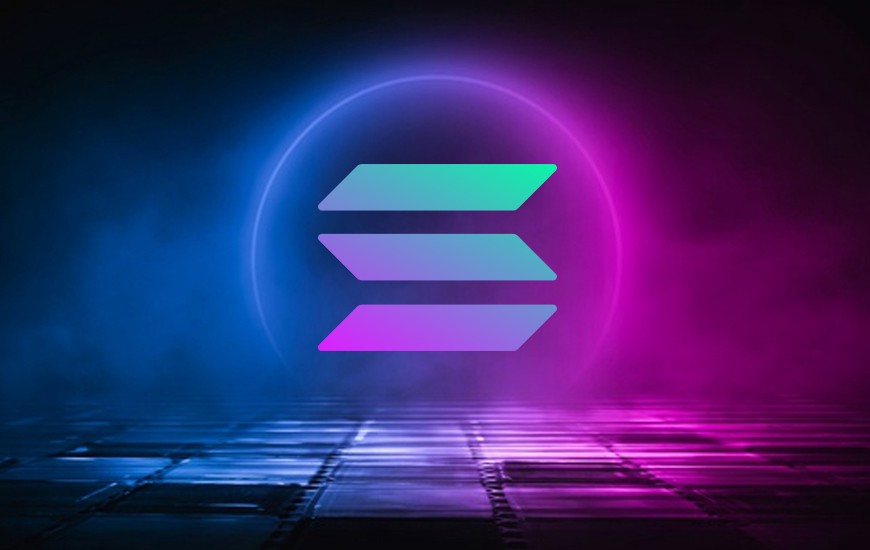Smart contracts and decentralized apps can be created using the open source blockchain Solana (SOL). It was created to address the scalability issue that the majority of blockchain networks experience.
It has established itself as one of the greatest platforms in terms of scalability, speed, security, and transaction costs in less than two years. It is also more environmentally friendly because it uses very little computer resources.
However, there is a lot of criticism directed at the network’s reliability, the large number of tokens held by project participants, and the platform’s sparse number of active projects and nodes. Solana is also criticized for not having a set token supply, which makes it potentially more vulnerable to inflation.
Ethereum (ETH)
Ethereum comes first. Although the platform has scalability, energy, speed, and cost issues, it continues to be the major platform for the development of smart contracts, DeFi applications, NFTs, and other blockchain-related services. Ethereum also has the most active validators and developed solutions. As a result, it is a very safe and decentralized network. Solana has a larger TPS, but Ethereum has much more resources than it does. In contrast, switching to Ethereum 2.0 offers greater flexibility, reduced power usage, and lower prices.
Binance Smart Chain (BSC)
The top cryptocurrency exchange Binance created the blockchain network known as Binance Smart Chain. It enables you to benefit from cheap gas prices ( 6.6 Gwei on average against 43.4 Gwei for Ethereum). Additionally, it provides block times that are only about three seconds long. Due in part to Binance’s popularity and its ability to work with the Ethereum virtual machine, BSC also benefits from a sizable developer community (EVM). However, BSC forgoes a certain level of decentralization in order to ensure a large rise in load and the best possible data flow.
Cardano (ADA)
The implementation of smart contracts and transaction processing are made possible by Cardano. The network speeds up transaction processing and lowers costs. Additionally, the network’s energy load has been significantly reduced thanks to the deployment of its Ouroboros consensus process. Up to 257 transactions per second are possible with Cardano (TPS). To surpass the two million TPS, it does, however, want to build a layer 2 solution.
Polkadot (DOT)
Polkadot is one of the most scalable platforms currently available. The network suggests using auxiliary chains called parachains to achieve a certain level of scalability. These are data structures that are pertinent to each application and that mainchain validators can examine. They enable a portion of the mainnet’s workload to be absorbed, clearing the way for the main chain to function. Furthermore, Polkadot promises sophisticated compatibility with various blockchains.
Avalanche (AVAX)
One of the ecosystem’s most cutting-edge blockchains is Avalanche. Its somewhat unique architecture is to blame for this notoriety. Actually, there are three blockchains involved in this operation, not just one. You can carry out particular tasks with each of them. Smart contracts on Avalanche execute relatively quickly. Additionally, it can accommodate up to 4500 TPS. The platform aims to be less expensive and more environmentally friendly with its low hardware requirements.
Elrond (EGLD)
Elrond is a blockchain that uses adaptive state sharding to attempt to provide very high transactional throughputs. This strategy involves breaking up the data into manageable parts and distributing them over various network shards. The internet-scale blockchain, according to Elrond, It would also be capable of processing up to 15,000 transactions per second. The protocol also features an estimated average transaction cost of $0.001 and a block duration of about six seconds.
Algorand (ALGO)
Blockchain technology Algorand optimizes its transactions using a variant of the Proof-of-Stake (PoS) consensus method. Additionally, because to its two-layer design, it can speed up exchanges and reduce congestion. The platform can therefore manage more than 1,200 TPS. In the upcoming years, it also intends to increase to 45,000 GST. In a similar vein, the platform provides a five-second finality.
Polygon (MATIC)
An Ethereum-based scaling solution called Polygon lowers the cost and execution time of blockchain transactions. Solana’s TPS is similar to the performance it provides, which is close to 65,000 transactions per second. In terms of scalability, Polygon is in fact one of Solana’s most significant rivals. Furthermore, the Ethereum architecture-based applications run on this network will have significant compatibility. However, Polygon might lose significance as a result of the improvements made to Ethereum 2.0.



